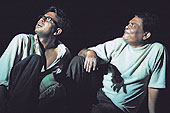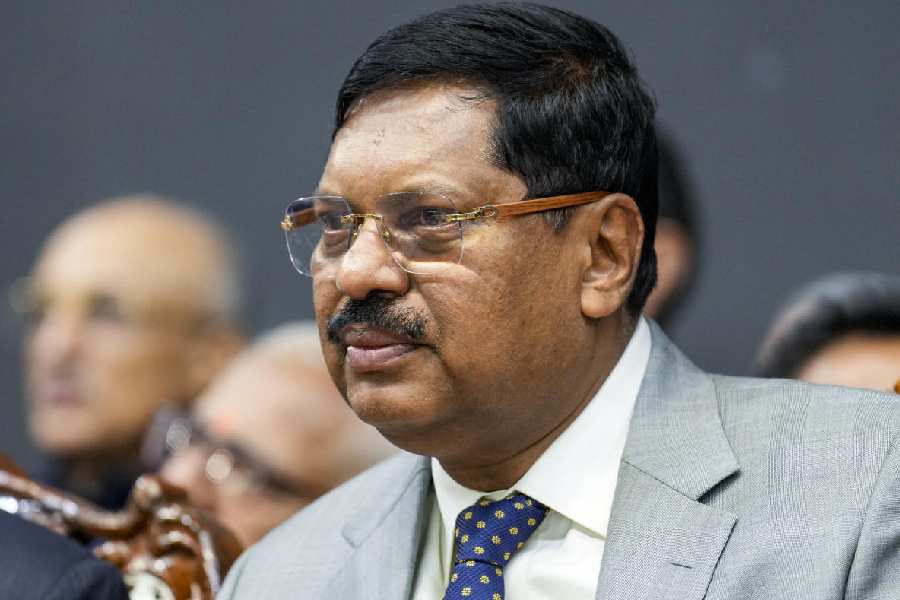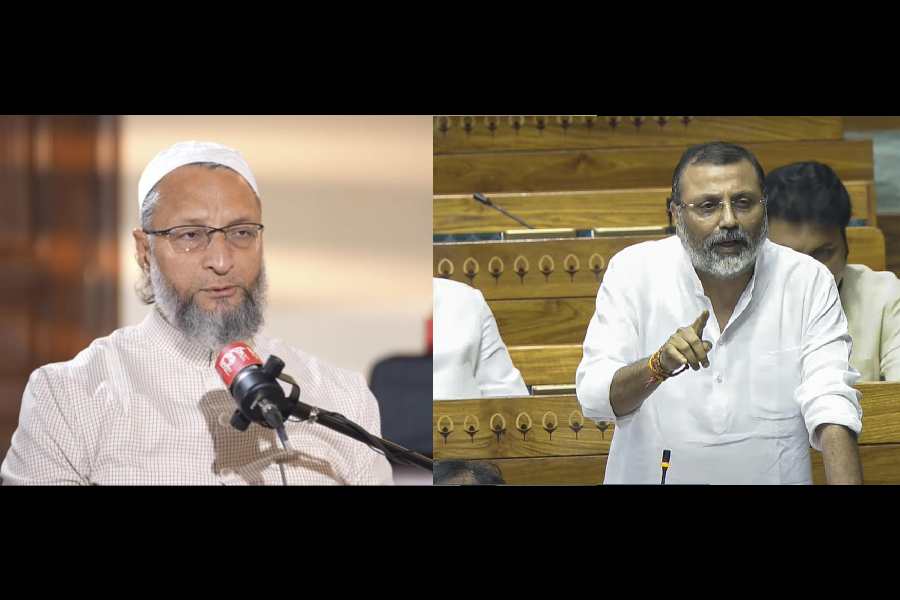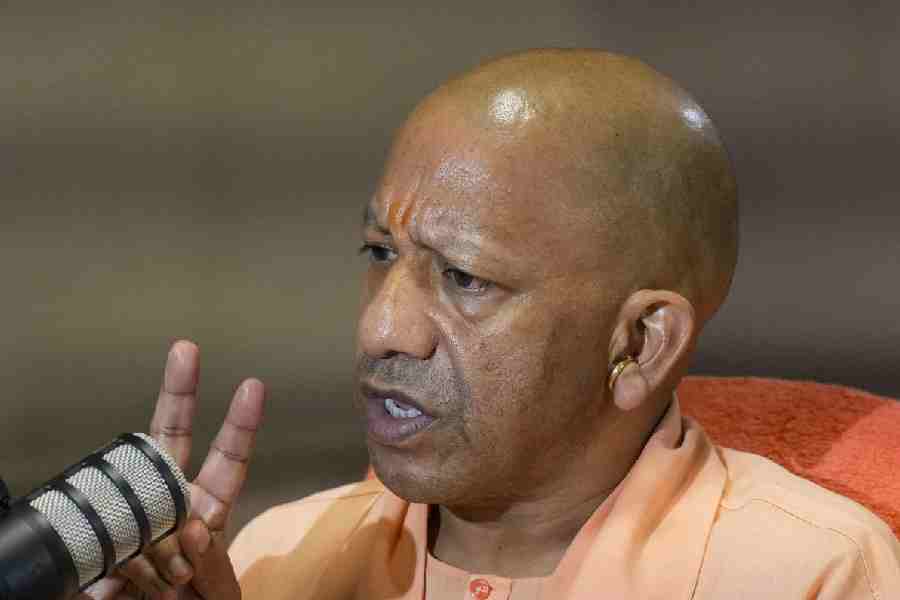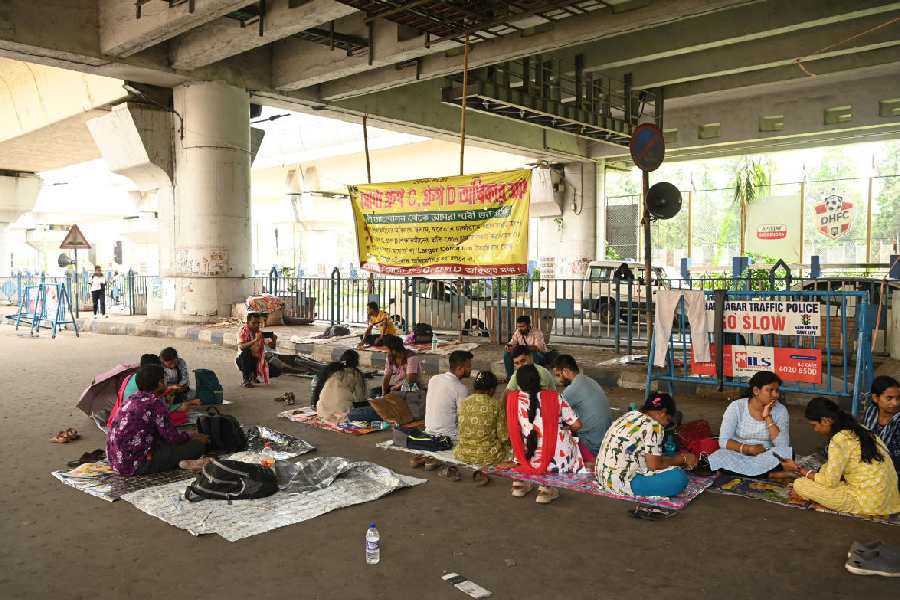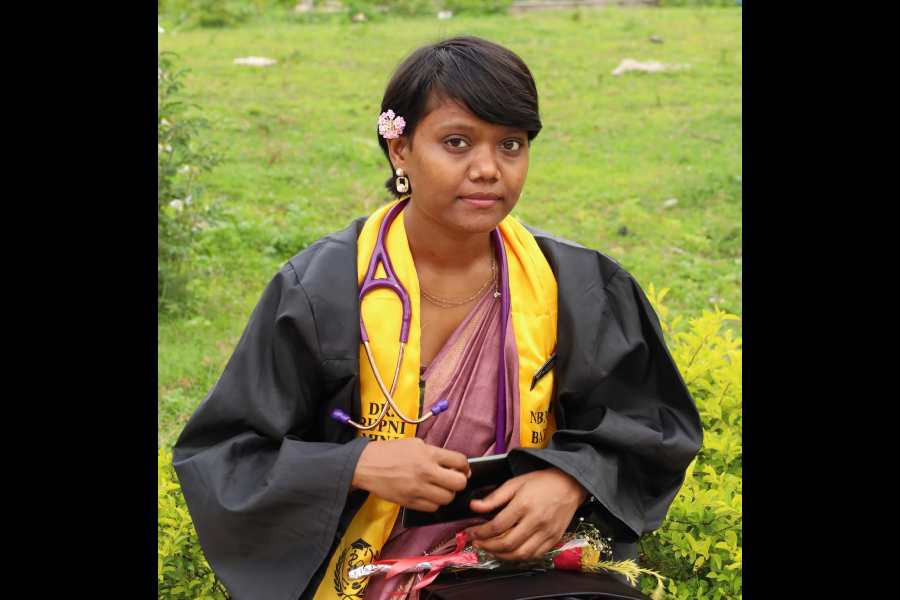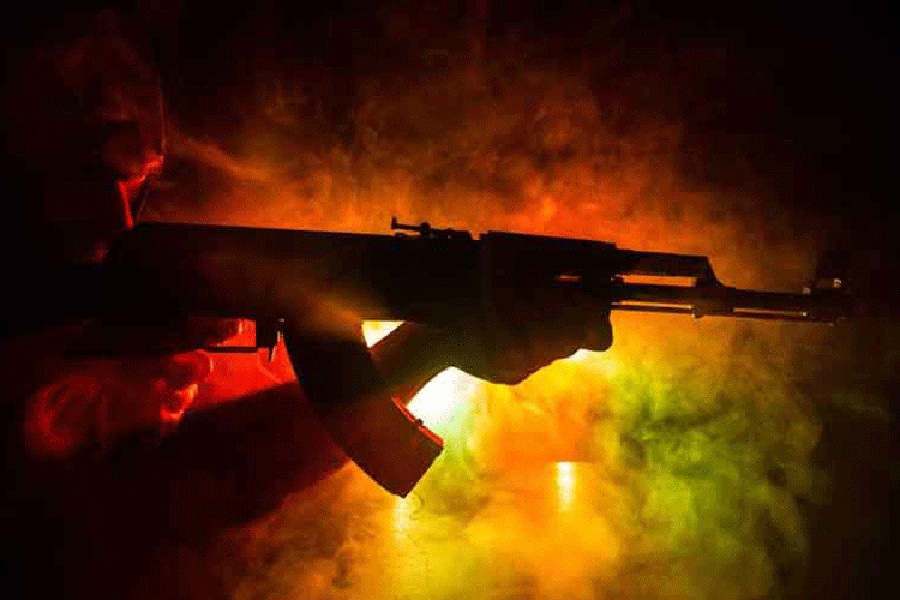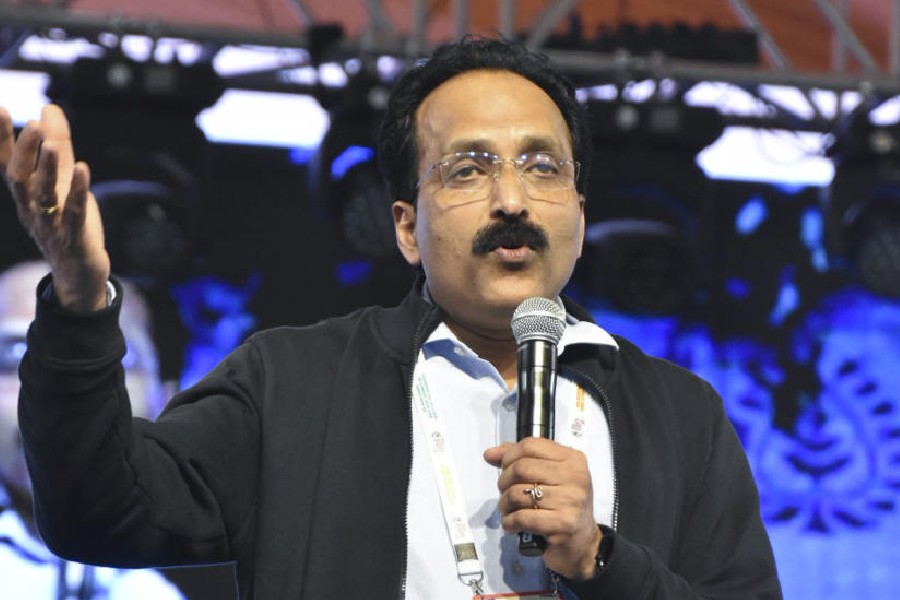 |
| Awe-inspiring: Sultan Khan on the sarangi at the ITC SRA meet (Picture by Shambhu Hazra) |
Sultan Khan?s sarangi recital was melody personified as the concluding item of the inaugural evening of the 12th ITC Sangeet Sammelan on November 19 at the ITC Sangeet Research Academy (SRA) lawns. Though the introduction emphasised his close association with Amir Khan?s music, he chose to sing and play the compositions of the Agra school in raga Jog. He took off using the full canvas of the raga with a focused raganga-based vistar with an awe-inspiring technical finesse, but the chromatic notes to create melody was uncalled for. Raga Sahara (desert) ? a melody inspired by Mehndi Hassan?s ghazal ? was his next choice.
Shruti Sadolikar Katkar?s simple, direct approach indicated total command over the intricate style of the Jaipur gayaki. After the ?Drums of India? presented by Mallar Ghosh, she took charge of her Gauri of Poorvi thaat with utmost ease. Frequent slips during fast taans struck a discordant note, but her Maru Bihag, a favourite of Jaipur, sparkled like a gem. She sang a thumri and a bhajan on request.
Singing duo Rajan and Sajan Misra enthralled the audience with their deftly presented Chandrakauns in Bageshri anga. Sajan?s approach to the tonic in upper octave fetched him repeated applause. He could have resisted the temptation to ask for more. Their next selection, Malkauns, another pentatonic raga in tow, was not a good choice either. A Bhairavi bhajan came as the finale of this musical spread of three evenings.
Sarod player Basant Kabra?s virtuosity in improvising extremely difficult note-and-phrase combinations was amazing, but his raga Shri yearned for soft strokes throughout. The madhyalaya dhun in Manjh Khamaj, conversely, was gentle and, therefore, pleasing.
With the director ITC-SRA a blind devotee of Amir Khan, it was no surprise to find the conference heavily loaded with Kirana gayaki. Shuddha Kalyan, the darling of Kirana, was Mashkoor Ali Khan?s choice. He refrained from very fast sargams and taans which usually lose out on musicality and that was his winning point. He went on to sing Bihag, followed by a khayal-oriented thumri in Khamaj. Gokulotsav Maharaj had an uncanny ability to imitate Amir Khan?s mannerisms and rather limited repertoire of phrases and taans, but fortunately steeped in sur. His clear diction enhanced the poetic beauty of the dhrupad-texts sung as khayal-compositions. SRA scholar Arshad Ali Khan sang Marwa, the most favourite raga of Ustads Waheed Khan and Amir Khan, in great detail, showcasing almost all his wealth.
This year?s ITC awardee Kashinath Mukherjee also had trained under Amir Khan. As if to take cue from this, Irshad Khan did a khayal vistaar on surbahar in Kirana fashion in Puriya Kalyan with a strong bias in favour of Puriya. He claimed the commonly heard Jaijaiwanti gat-bandish as Ustad Inayat Khan?s composition. Pandit Hariprasad Chaurasia etched a portrait of Malkauns with a variety of gat-compositions in different layas. D.K. Datar, hailed as the D.V. Paluskar of the violin, played Shuddha Kalyan, Madhukauns and a dadra dhun.
To avoid inaccurate usage of Hindi or French or wrongly pronounced names ? for example, Waaman (Vishnu) as Waman (vomiting) ? the SRA should be careful while introducing the artistes in future.

